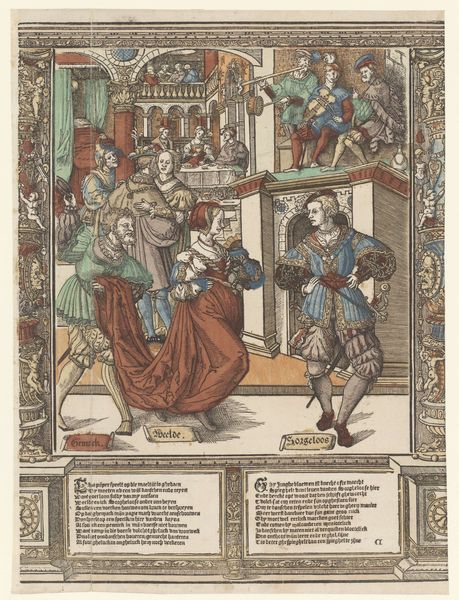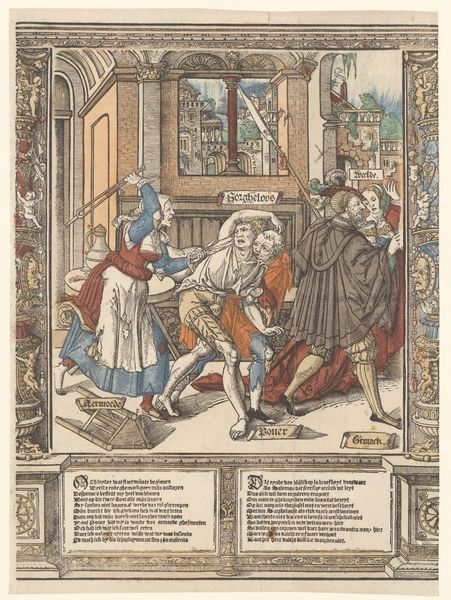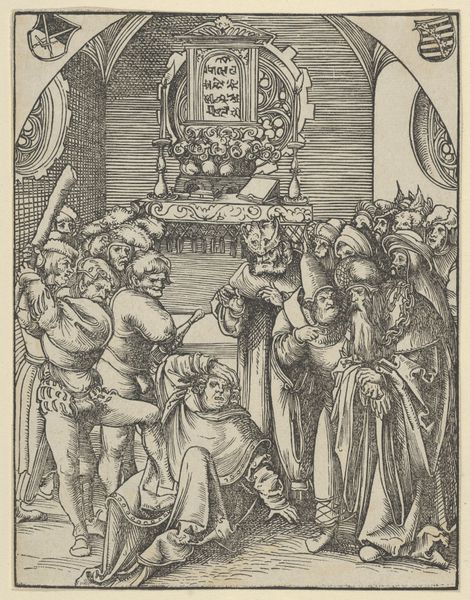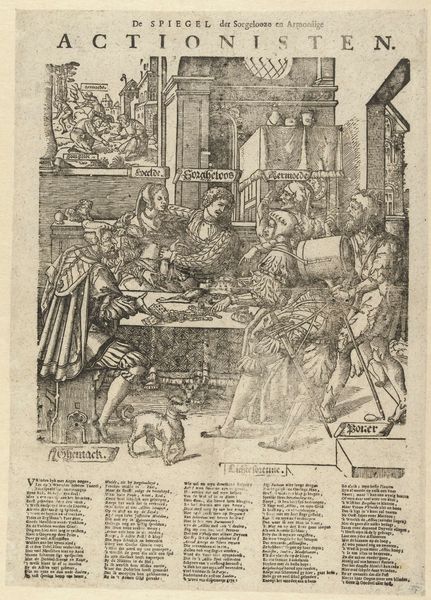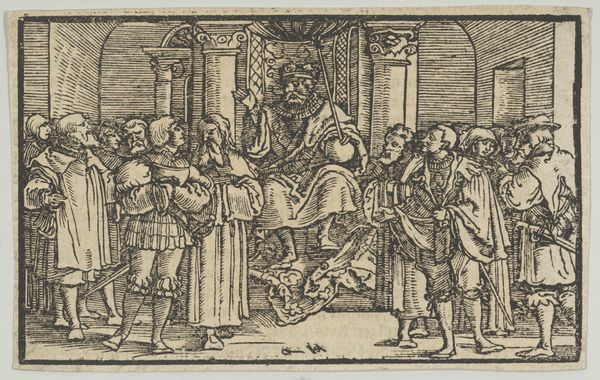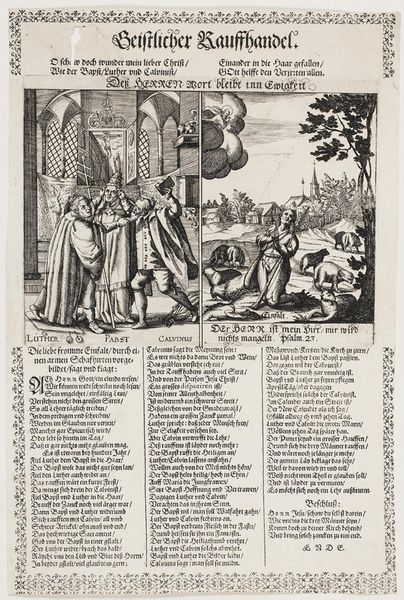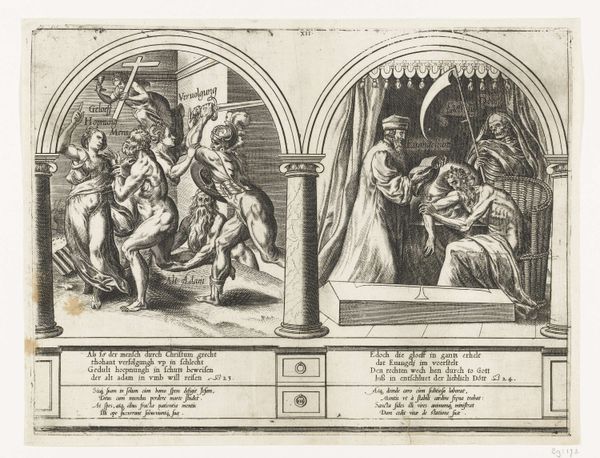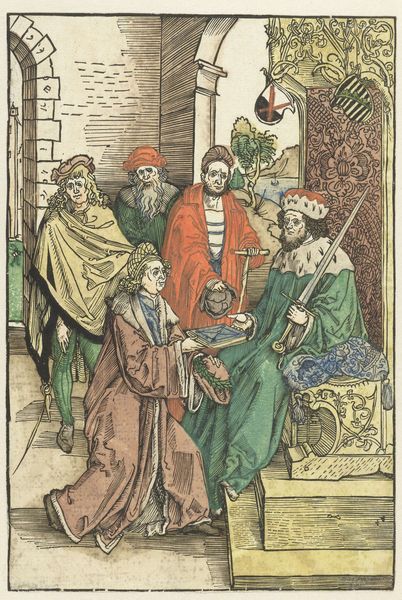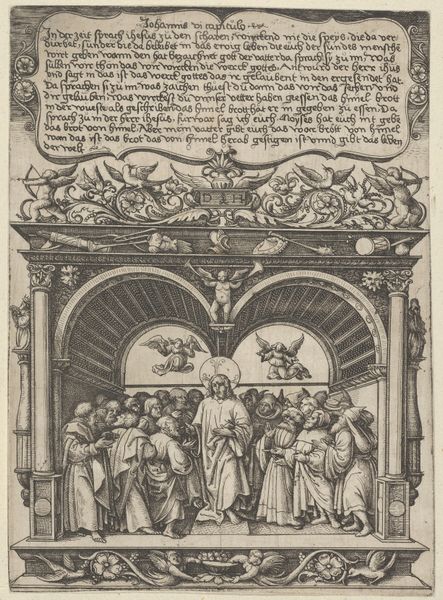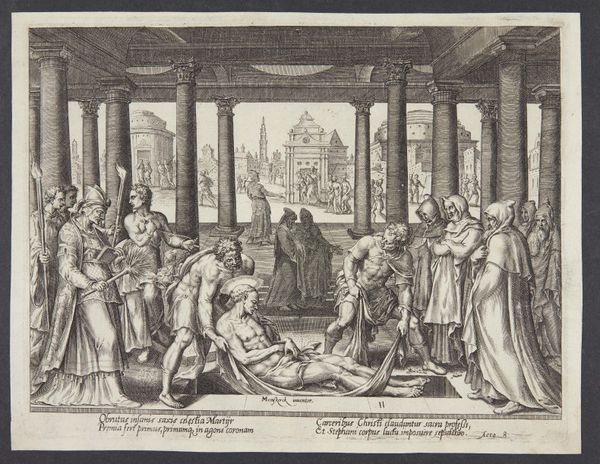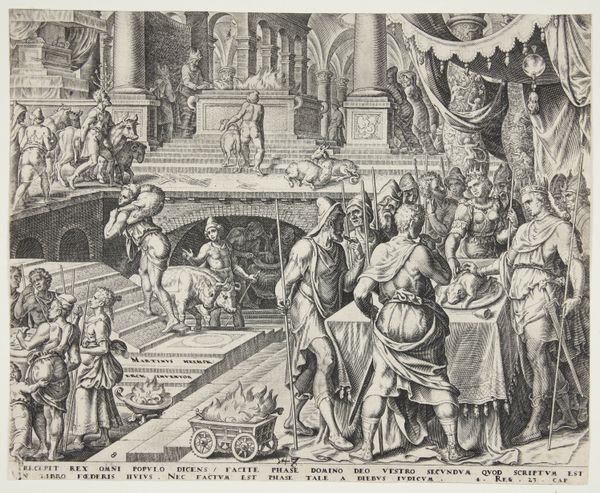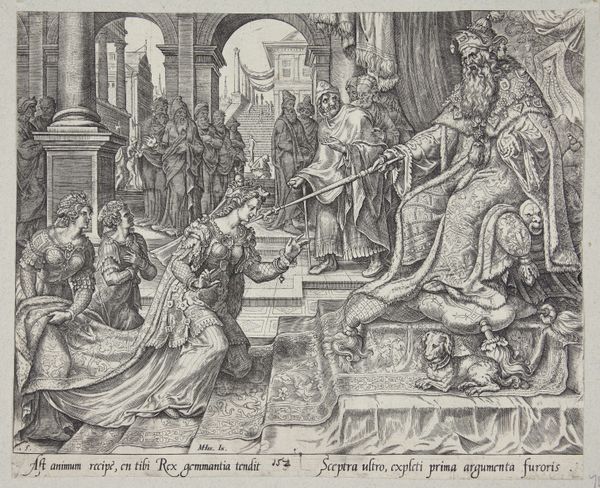
drawing, print, engraving
#
drawing
#
narrative-art
# print
#
figuration
#
11_renaissance
#
genre-painting
#
northern-renaissance
#
engraving
Dimensions: height 395 mm, width 289 mm
Copyright: Rijks Museum: Open Domain
Curator: We are looking at "A Game of Chance," a work created around 1541 by Cornelis Anthonisz., held at the Rijksmuseum. It's an engraving, with touches of color. Art Historian: My immediate reaction is a sense of chaotic indulgence, yet strangely moralizing, like a stage play unfolding with characters caught between pleasure and consequence. Curator: Yes, the composition is quite dense, wouldn't you say? Observe how the table laden with coins and figures dominates the central plane, while a narrative unfolds above with additional details like wealth, heedlessness, and poverty literally looming over the characters’ heads. There’s also the decorative frame containing Latin script. It really encloses the subject within a well-defined structure. Art Historian: The allegorical quality is quite rich! "Wealth" represented above literally overlooks the gambling scene and the resulting impoverishment, with an inevitable sequence implied for our foolish participants here below. Look closely, each person seems to embody a specific aspect of the pitfalls of gambling. Even the small dog, perhaps symbolizing loyalty or lost innocence... Curator: It also enhances the perspective, drawing the eye back to the figures clustered at the table. The artist plays with visual cues quite intelligently. Art Historian: True. The coins themselves take on symbolic meaning: fleeting fortune, temptation, corruption, etc. Even their presence in the border gives one pause: aren't we also a kind of "player" looking down upon these representations of excess? I'd wager people deeply considered this artwork back when social issues were visualized instead of described. Curator: A persuasive theory, and supported by the detail given to spatial arrangements. Art Historian: All told, Cornelis Anthonisz.’s engraving becomes more than just an artwork, it becomes a symbolic landscape depicting eternal themes of temptation, fate, and moral consequence through readily understood symbolic cues. Curator: Indeed, a carefully arranged set of visual strategies allows for nuanced commentary on human folly. A reminder that sometimes the structure holds the true message.
Comments
rijksmuseum about 2 years ago
⋮
A reputed spendthrift called Sorgheloos (Careless) is the protagonist in a series of six woodcuts. This is the fourth print, in which Sorgheloos, after having eaten, drunk and danced, begins to gamble with a pedlar. While his arm is still draped over the shoulder of Weelde (Luxury), a shabbily dressed couple – Armoede (Misery) and Pover (Poverty) – make their entrance. Sorgheloos’ fortune will soon take a different turn…
Join the conversation
Join millions of artists and users on Artera today and experience the ultimate creative platform.

